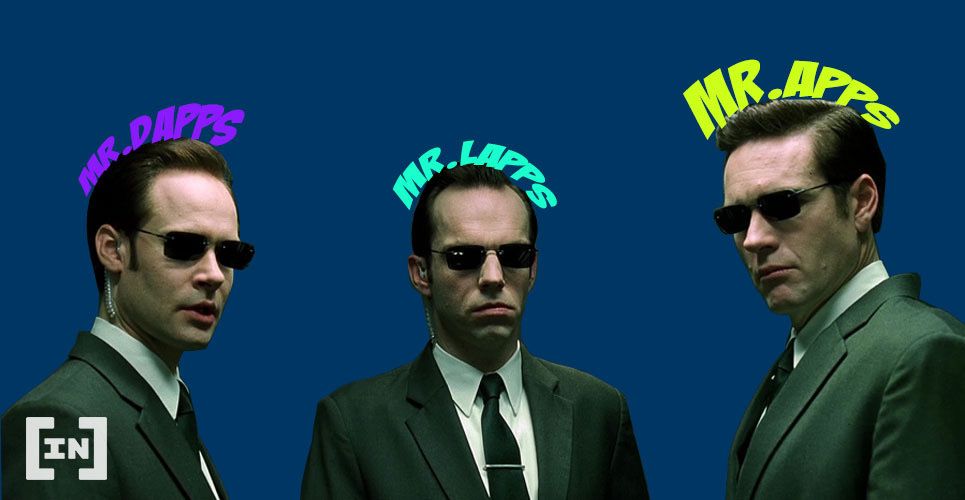Applications developed using the Lightning Network are being more heavily integrated into society. A variety of purposes are developing for these Lightning apps (lApps). They are decentralized in their operations, similar to decentralized applications (dApps), but differ in many important ways.
Unlike mobile apps available on Google Play and the Apple app store, lApps and dApps are designed to free the user from the centralized powers that hoard their data for unknown purposes.
About Centralized Apps
In 1994, International Business Machines Corporation (IBM) introduced the first personal digital assistant (PDA) that could operate as a telephone. Included within the phone were a number of features like Calculator, Calendar, and Note Pad. These were the earliest mobile applications. The word ‘app’ was not being used at that time. It was not until July 2008 when Apple, Inc. first introduced the App Store on the iPhone that the word ‘app’ entered into common nomenclature. At first, there were 500 downloadable apps, but today that number has grown into the millions. Google LLC released the Android Market, now Google Play, several months later to distribute apps on Android-based operating systems. Apps can be created by virtually anyone and for nearly any purpose, but they can only be accessed using hardware and software developed and owned by third-party intermediaries like Google or Apple. These companies host the centralized servers which deploy and host the apps. As a result, these companies are able to gather and hoard private data from users. This data is sometimes sold or accessed via security breaches and hacks.A Decentralized Movement
Decentralized applications (dApps) developed as an alternative to the normal mobile applications. Unlike apps, dApps are not deployed or hosted on centralized servers. On the contrary, they use distributed ledger technologies like the blockchain to decentralize ownership and authority to the active users of the network. [bctt tweet=”By using dApps, users are able to profit from their activities whereas apps only increase profit for the app creators and third-party hosts.” username=”beincrypto”] The first cryptoasset successfully developed for mass usage was Bitcoin. It was developed as a cryptocurrency to allow peer-to-peer (P2P) transactions across the network without the need for banks or governments. DApps are a specific type of cryptoasset, which typically includes platforms, user interfaces, and tokenized assets, and are built using second-generation cryptoassets. Ethereum (ETH) integrated smart contracts with the blockchain technology to create the first-second generation cryptoasset. Unlike cryptocurrencies, these assets acted as platforms that enabled the development of dApps. Over 1,000 are developed on the ETH Virtual Machine while hundreds of others have been built on other second-generation cryptoassets like Tron (TRX), EOS (EOS), Steemit (STEEM), NEO (NEO), and others. A variety of purposes have developed for dApps. Social media-based dApps have been created to replace apps like Facebook and Twitter. There are also dApps for gaming, investing, gambling, data-sharing, chatting, and much more. Many of these dApps include a native reward system for using the platform. For example, where users currently are not rewarded for posting on Facebook, there are already social media dApps what will offer rewards to users for sharing on their platform. Furthermore, dApps are developed with two primary types of tokens. Fungibility tokens can be exchanged from one person to another. Non-fungible tokens, however, remain in the permanent ownership of the person who acquires them and cannot be exchanged. For example, Decentraland is a virtual reality gaming platform which allows users to buy non-fungible LAND for fungible MANA. Where MANA can be bought or sold for BTC or ETH, LAND remains in the hands of the person who buys it forever.
What are lApps?
Lightning Applications (lApps) are similar to apps and dApps except they are developed using the Bitcoin Lightning Network. There is no centralized server on which they are hosted nor are they built on second-generation cryptoassets. On the contrary, the Lightning Network consists of side chains on the main Bitcoin blockchain (mainnet) which act as P2P payment channels. Using these payment channels, individuals can buy and sell a variety of virtual and real-world goods and services with fewer fees, quicker transaction times, and greater security than if the transaction took place over the BTC mainnet. Theoretically, the Lightning Network can solve the problem of scalability which has plagued BTC since its earliest days. LApps have been developed for a number of purposes including integration into the Internet of Things (IoT). Point-of-Sales interfaces have been introduced by BTCPay Server for example. There are also lApps that serve as WordPress paywalls, e-commerce interfaces, and message relay clients among others. Wallets integrated with the Lighting Network have also been developed, but many of these serve as apps rather than lApps. The Eclair Wallet, for example, was released in April 2018 and touted as the first Bitcoin wallet to integrate the Lightning Network available on Google Play. Because the wallet is being hosted by Google, it exists as a centralized Bitcoin-based app which uses the Lightning Network — very different from a lApp.Conclusion
Since the advent of mobile applications in 1994, a whole new world of possibilities has emerged. Over the last 24 years, centralized apps have found usage on desktops and mobile phones while alternatives have emerged in the form of dApps and lApps. When or if dApps or lApps seize dominance over apps depends largely upon their social integration and mass adoption. The only way in which new technology can replace an old one is if people start using it. Do you think dApps or lApps could overthrow the dominance of centralized applications? Let us know your thoughts in the comments below!
Do you think dApps or lApps could overthrow the dominance of centralized applications? Let us know your thoughts in the comments below!
Top crypto platforms in the US
Disclaimer
In adherence to the Trust Project guidelines, BeInCrypto is committed to unbiased, transparent reporting. This news article aims to provide accurate, timely information. However, readers are advised to verify facts independently and consult with a professional before making any decisions based on this content. Please note that our Terms and Conditions, Privacy Policy, and Disclaimers have been updated.

Alexander Fred
Global AI, Data Science, and Blockchain expert. Alexander writes for BeInCrypto where he completes technical analyses of various alt-coins and qualitative commentary and analysis about various cryptoassets and their potential for social integration.
Global AI, Data Science, and Blockchain expert. Alexander writes for BeInCrypto where he completes technical analyses of various alt-coins and qualitative commentary and analysis about various cryptoassets and their potential for social integration.
READ FULL BIO
Sponsored
Sponsored
